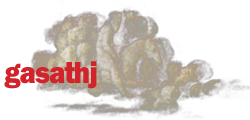Analogical Design Assimilations
One of the challenges of design instruction is to establish a fertile environment for discovery and imagination, whilst grounding design work within architectural constraints. The beginning student especially has difficulty juggling the specific programmatic requirements of a studio brief, and the openended- ness of the design process itself. To compound this dilemma, design studios often assume the lexicon of “problem-solving”; the final design is commonly referred to as a “solution” or “answer”. When the design process is goal-oriented in the early stages, the possibilities for open exploration and imagination are curtailed. An experimental studio at Lehigh University’s Department of Art and Architecture sought to remedy this dilemma.
In order to establish the studio as a setting for wonder, research, and invention, two consecutive iterations of this experimental studio emphasized the process of design inquiry. The specific programmatic requirements of the project were withheld at the beginning of the studio, and instead, the students undertook a series of intensive exercises (which were cumulative in effect) based on a series of analogical studies. Analogy was an effective device for creative invention, since parallel readings were implicit at many levels, from surface meaning to operative functioning. Analogical exploration also allowed the students to assimilate complex forms and processes from realms outside of the architectural discipline. The students were thus enabled to discover architectural form and use in a manner unencumbered by preconception and conventional program.
Using analogy in the form of design assimilation, one is positioned to rely on his or her creative ability to associate and fabricate objects that engage materials into relationships that convey parallel meanings. These constructions can, in turn, establish formal orders that become the basis for an architectural grammar of details. Their meaning is gained through their ability to conform or transform to the context in which they are placed. These construction details can also be employed as a point of departure in the development of a design process. Through an analogical study of the joints in the body, the invention of a joint detail can form the basis of an architectural vocabulary that can lead to several forms of design development.
Arms and Wings
The analogue studio, therefore limited itself to the investigation of the architectural part, or detail, specifically, joints and connections. These exercises would eventually lead to specific propositions, such as, cantilevers, corbels, arches, trusses, hinges, and pivot joints. These devices were not a priori goals, but were discovered through the form-making process itself. To begin, the students observed and compared the arm of the human body and the wing of birds, bats, or insects in terms of dynamic forces accommodated by the muscles, tendons and joints of these two body forms.
Mechanical Things
The students then proceeded to develop a third collage of mechanical artifacts that had an affinity to the previous studies. Simple devices (such as lamp arms, car jacks, umbrellas, drawing instruments) were sought. As in the earlier collages, mechanical items were sampled from a combination of photographs, objects, drawings and words. The students concurrently observed the drawings of Leonardo da Vinci, in
particular those that simultaneously convey the analogous workings of mechanical, anatomical and architectural devices. From these drawings the students inferred the interchangeability of parts that were human, animal and mechanical — i.e. whereby
one part could be the “prosthetic” of the other.
SIMULATION VS. ANALOGY
mechanical simulacrum
From the studies in Exercise Two, each student created a model, or mechanical simulacrum, that could demonstrate the dynamic actions from their wing analysis. These models were crafted from basswood using mechanical hardware for joints and built at a large scale (usually 1:1). Using the form language derived from the geometrical abstraction (the second layer in Exercise Two), these constructions translated the actions of the wing in its entirety. Resemblance of the model to the mechanical, (or operative) appearance of the entire wing was desirable in this model.
mechanical analogue
The students constructed the second model, or device, as a mechanical analogue to a specific part or detail of the wing analysis. It gained its potency from the nature and fit of its parts. This model did not attempt to resemble but to demonstrate metonymically the action of a particular condition. The parts could be separated from their context or viewed as a series of parts disconnected form the whole. Resemblance of the model to the original was not desirable for this model. The models were meticulously crafted, whereby each and every joint and connection acquired a distinct character. The students made additional “working drawings” while constructing the models, whereby drawings and models informed each other
in an interactive dialogue. Each model obtained an intrinsic value in relation to its function of movement and support and also acted as an initiator to new refinements and innovations.
Natural Growth as a Generative Analog
For the second iteration of this studio, in a reversal of ordinary studio practices, the students assumed the responsibility for determining the meaning and functions of their architectural constructs. By looking at function as a response to the manufactured artifact (rather than as the initiator of its design) the students evaluated the intrinsic properties of their invented form. Could the devices return to architectural situations that involve the action of the human arm, such as a door swing? Could their devices become roofs, walls, or both simultaneously? Could the study of natural growth patterns provide an analogous process to design development? In all things natural, growth generates form. The students were now to reconstruct a new body propagated through the multiplication of a single element of the arm or wing into an organization of parts.
